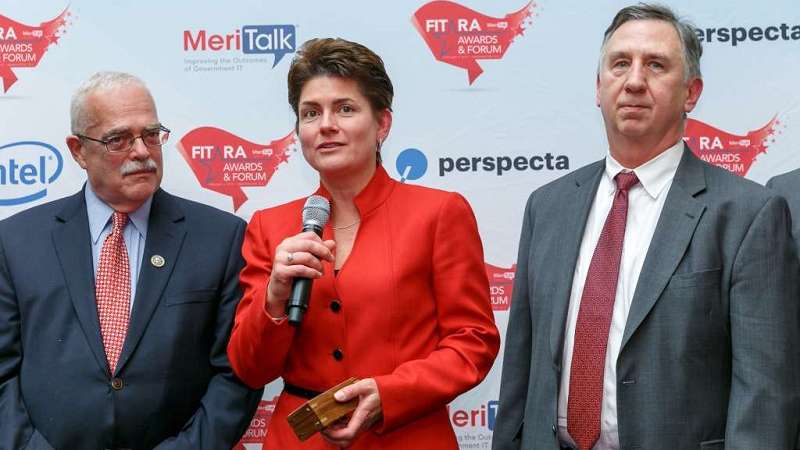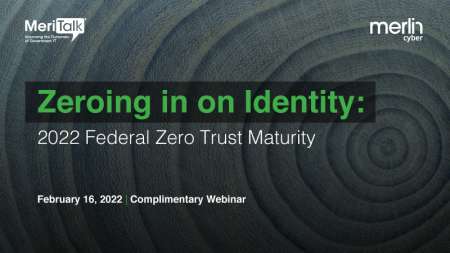
Deputy Federal CIO Maria Roat, who is retiring from government service at the end of March, reported this week that Federal civilian agencies are making solid progress to expand beyond the pilot phase an initiative to put chat and collaboration tools in place across agencies.
Keynoting a Feb. 9 event organized by FCW, Roat talked about progress that agencies have made since the end of a pilot project in October 2021, and the subsequent standing up of a related program management office within the General Services Administration (GSA).
“We’re actually going live with the agencies,” she said. “There’s actually weekly meetings with all of the agency points of contact, and we have a little scorecard that we’re keeping track of [what] agencies did” so far on the project, Roat said.
“It’s not really as much a technical problem,” she said of the project. “The technical part is really easy around interagency collaboration.”
“Right now, it’s tackling chat and calendar sharing,” the Deputy Federal CIO said. “Agencies are already working on their whitelists to open up so they can chat and share calendars with other agencies.”

During the pilot phase, Roat recalled, “there was a lot of discussion out of the pilot about ‘I need an MOU to be able to talk to so and so.’ Well, it makes no sense for me to do an MOU with 30 other agencies, how about if I just do one that’s a blanket one for everybody,” she said. “So agencies are working through that.”
“At the last CIO Council meeting we briefed out [on the project, and] I showed what the status was on the scorecard. So the agencies could see where they were – yellow, red, and green. It got their attention,” she said.
“They’re pretty actively using that and frankly, before I retire at the end of March, I really want to see all the agencies that are participating to be able to chat and share calendars with each other,” she said.
“We’re continuing to be aggressive and push on that and I’m pretty excited about it because this is just the baby step of a much larger, impactful project for the Federal government to be able to collaborate internally with each other. Being able to share data, being able to share information, all of that this is one little thing that I think is hugely impactful. So we are really pushing on that and being really aggressive.”
Roat spoke highly of the deployment of Microsoft 365 collaboration tools at the Defense Department (DoD) during the pandemic.
“I love what DoD has done, they just went all in on using the Office 365 capabilities, opening that up on the Federal civilian side,” she said. “This is where we’re headed,” she said, adding that Federal civilian collaboration capabilities won’t be restricted to the Microsoft capabilities. “We also know that we’ve got other collaboration capabilities” in use by Federal agencies, she added.
Citizen Service Goals
Elsewhere during her wide-ranging Feb. 9 discussion, Roat spoke broadly about efforts by OMB and Federal agencies to create the tech capabilities that will enable the goals of the Biden administration’s executive order to improve citizens service.
“We are moving to flexible, secure, scalable solutions, digital enablement of those business processes, internal to government, and most importantly, for citizens – that’s a priority,” she said. “We continue to move fast.”
“The tech community has those plans, those priorities for digital services and those scalable infrastructures where we are definitely expanding our commercial platforms, leveraging those scalable commercial platforms, extending the cloud capabilities, and having that intense focus on cybersecurity throughout everything we’re doing with all of those digital processes,” she said.
“A big part of what is next is understanding from the mission, and from those teams … what additional business process changes must happen and incorporate into to all of those plans,” she said. “You’re just not going to insert a digital form into some old process, but really thinking through the business process changes that really need to happen.”
“I’ve always been … the cheerleader for the Federal government and all the really cool stuff that happens across the Federal government,” she said. “There are so many success stories in the breadth of modernization projects that are using cloud, advanced computing, data science and in research and development. And there is so much going on across the Federal government as agencies are embracing low and no-code applications for accelerating application development.”
Moving Fast
She recounted recent examples of agencies deploying low-code applications, and in cutting over applications from on-prem systems to cloud-based systems in as little as a weekend.
“That’s not to say they didn’t have some hiccups along the way that they had to work through, but overall it was successful,” Roat said of those efforts. “Agencies are excited about these things. And while it may not seem like a big deal to maybe the American public that’s on the outside looking in, for that agency being able to flip [service] over a weekend, move their applications to the cloud, take advantage of the SaaS capabilities that improve not only the experience for the employees of that agency, but also for the public that they serve.”
“That’s an enormous responsibility for CIOs, CTOs, and the entire tech community … that is enabling the mission,” Roat said. Those tech leaders, she said, “are responsible … for billions of dollars in that technology portfolio and … the tech community is embracing putting that customer first and leading with scaled agile frameworks.”
Data Sharing, Outcomes Focus
“On the data front, [agencies are] creating those data sharing pathways and breaking down those silos – even within program offices and within components and bureaus – and making sure there’s better data integrity as more of you collaborate on data insights and new datasets,” Roat said.
“It’s actually pretty cool starting to see this aperture open up across the Federal government and we know the importance of data consistency in those data sharing protocols. That’s an integral part of the Federal data strategy.”
“Very quickly across the Federal government, we’re pushing interagency interoperability and collaboration,” she said. “The better services we provide for our Federal employees, the faster we can provide digital citizen services.”
“And you know, the Federal CIO Council is continuing to focus on enterprise initiatives, zero trust, cybersecurity, improving overall operational integration, digital service delivery, digital mission, operational consolidation and shared services,” Roat said, while adding, “Adoption doesn’t always move at the speed of capability.”
“We’re continuing to drive towards those consistent outcomes, this consistent levels of maturity across the Federal government,” she said. “You’re seeing that around cybersecurity data as we try to raise those levels of maturity across the Federal government. This work that we do for our internal employees, for our Federal employees as well as our citizens, is a team sport. And it requires that holistic strategy and requires business owners and all stakeholders to be part of that delivery.”
“There’s huge advantages to moving aggressively, I’m probably the epitome of moving fast,” Roat said. “But we also need that to mean we have to have more frequent updates, and we need a more nimble learning environment, and that change adoption process. I can’t say enough about change management when you want to move aggressively and move fast.”
